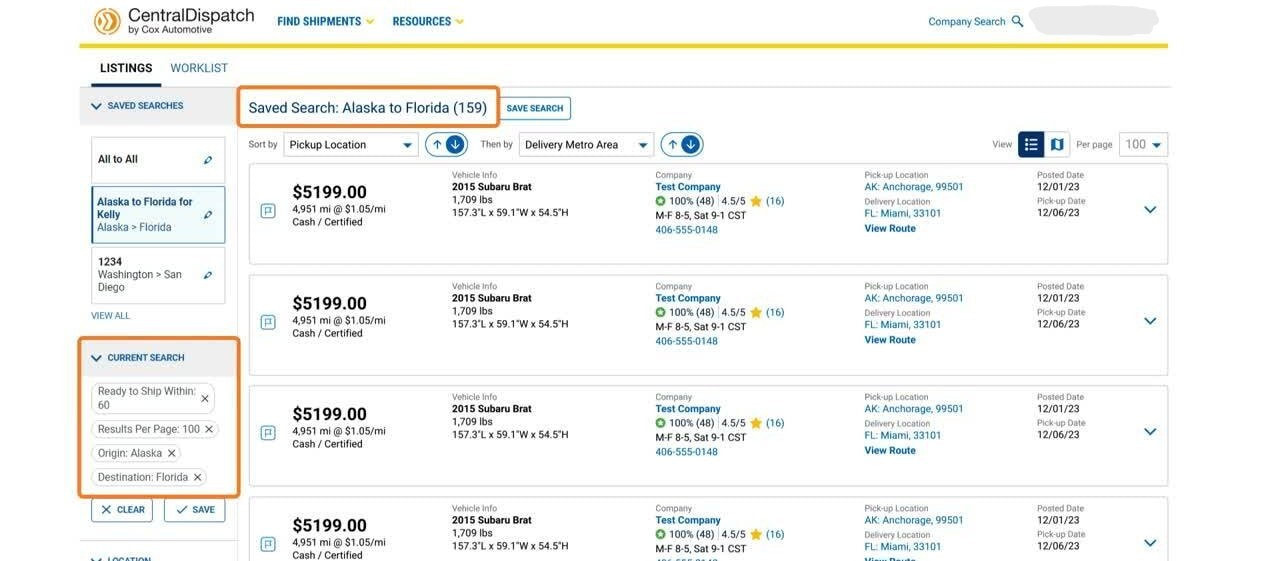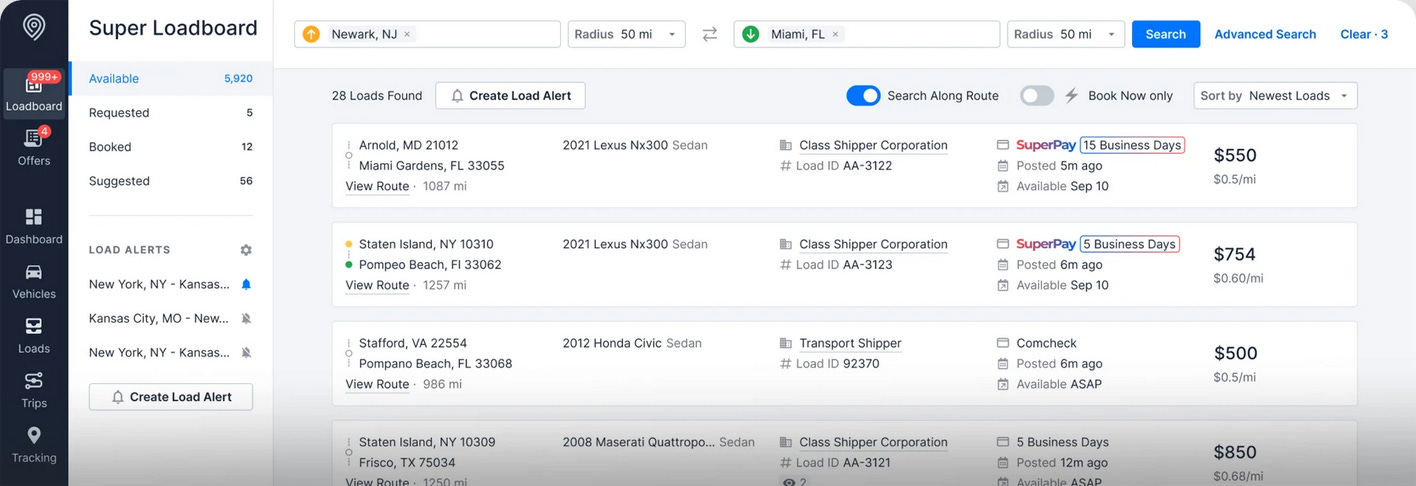How Load Boards Work with Auto Transport
In the auto transport industry, load boards serve as digital platforms that connect vehicle transport brokers with carriers (drivers or trucking companies).
These platforms streamline the logistics of finding and booking transport for vehicles, making them essential tools for efficient operations.
Here's a breakdown of how load boards function in auto transport:
Posting a Vehicle Load
Auto transport brokers or shippers post available vehicle shipments on the load board. Each post includes key details like:
The type of vehicle(s) to be transported (sedan, SUV, motorcycle, etc.).
Pickup and delivery locations.
Time-frames for pickup and delivery.
Vehicle condition (operable or inoperable).
Payment offer, usually stated as a price per vehicle or a flat rate.
Carriers Search for Jobs
Auto transport carriers log in to the load board to find available loads. They can filter searches by route, vehicle type, payment amount, and other criteria to match their capacity and schedule. Many carriers use these boards to minimize “deadhead” miles (empty trips) by securing loads that fit their current routes.
Negotiation and Booking
Some load boards allow direct booking, where carriers accept the listed price, while others enable negotiation. Carriers and brokers can communicate through the platform to finalize the rate and details. Once both parties agree, the carrier is assigned the load, and the shipment details are shared.
Tracking and Communication
Many load boards offer integrated tools for shipment tracking and communication, ensuring brokers and customers can monitor the vehicle’s progress. These tools help maintain transparency and reliability throughout the transport process.
Payment Processing
Auto transport load boards often include payment processing features to ensure carriers are paid after completing the shipment. Some platforms support quick pay options or work with factoring companies to provide faster payouts.
Popular Auto Transport Load Boards
Central Dispatch: The most widely used load board in auto transport, connecting brokers and carriers across the U.S.
Super Dispatch: Known for its mobile-friendly interface and built-in tools for tracking and invoicing.
uShip: A marketplace-style load board where carriers can bid on shipments posted by brokers or private customers.
Advantages of Load Boards in Auto Transport
Efficiency: Load boards simplify the process of finding and booking loads, saving time for brokers and carriers.
Flexibility: They allow carriers to fill routes and maximize capacity, reducing operating costs.
Scalability: Brokers can post multiple shipments and manage assignments in one centralized system.
Challenges and Considerations
Competition: High competition on load boards can drive prices down for carriers.
Reliability: Brokers and carriers must verify each other’s credibility to avoid scams or unreliable parties.
Fees: Most load boards charge subscription fees, which can add to operational costs.
Load boards are vital in the auto transport industry, offering a centralized platform to connect brokers and carriers, streamline operations, and ensure timely vehicle shipments. However, due diligence is essential to maximize their benefits and avoid pitfalls.








